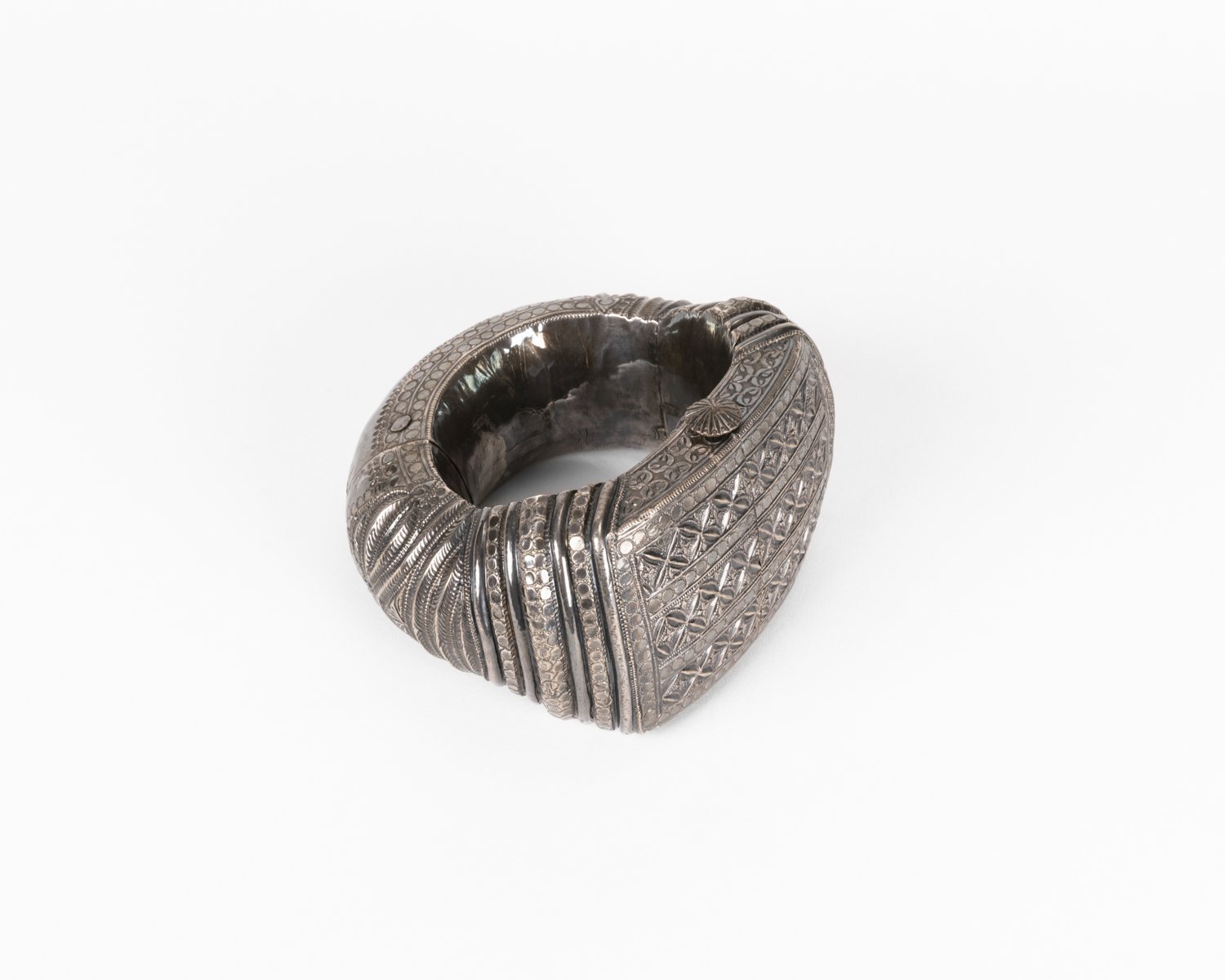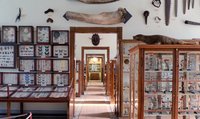Der Reif lässt sich mit einem massiven Stift verschließen und öffnen. Für derartige reich ornamentierte Reife ist die Oasenstadt Nizwa im Oman berühmt. Die Schmuckstücke wurden entlang der Seehandelsstraßen bis zur Westküste Indiens (Gujarat) und der Swahiliküste Afrikas gehandelt, auch unter dem Namen "Sansibar-Fußkettchen". Sansibar war von 1698 bis 1861 unter der Herrschaft des Sultanats Oman. Der Reif ist hohl und röhrenförmig, reich verziert, aus Silber, wahrscheinlich Ende 19./Anfang 20. Jahrhundert. Wahrscheinlich auf einer der Reisen von Fürst Otto Victor II oder seiner Familienmitglieder erworben. Literatur: Ginzberg (2000): African Forms; Forster (1998): Disapearing Treasures of Oman
en

